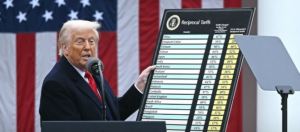In a historic moment for Japanese sumo, Onosato Daiki, a local wrestler, has been honored with the prestigious title of yokozuna, marking a significant triumph in a sport predominantly ruled by foreign competitors.
Japan Celebrates the Return of a Local Sumo Champion

Japan Celebrates the Return of a Local Sumo Champion
Onosato Daiki achieves yokozuna status, ending an eight-year drought for Japanese wrestlers at the top of sumo.
Onosato Daiki of Japan has made headlines by becoming the first Japanese wrestler in eight years to be promoted to yokozuna, the highest rank in sumo, following centuries of tradition. His success was celebrated on Wednesday, as he breaks the pattern of Mongolian wrestlers dominating the sport's elite ranks.
Sumo, a sport steeped in culture and history, is often seen as a symbol of Japan's national identity. The selection of a yokozuna involves a rigorous evaluation by a council of elders and historically, there have been only 75 yokozuna since the 1600s, a process that was formalized in the early 1900s. Unlike other titles, once a wrestler is appointed as yokozuna, they can never be demoted.
The criteria to become a yokozuna usually include winning two consecutive tournaments in the top division. Onosato managed to achieve this feat swiftly, capturing titles in March and again in May, after only 13 major tournaments—the fastest rise in the current system.
In his own words during a recent press conference, Onosato expressed the enormity of his new role: “This is a very much unknown territory for me. I want to maintain my style, be Onosato, and I will work hard to become a unique and unparalleled yokozuna.” Currently, there remains only one other yokozuna, Hoshoryu, a Mongolian who attained the title in January, illustrating the significance of Onosato's achievement in the landscape of contemporary sumo.
As Japan rejoices in this remarkable accomplishment, it is a hopeful sign for the future of the national sport and the legacy of its domestic athletes.
Sumo, a sport steeped in culture and history, is often seen as a symbol of Japan's national identity. The selection of a yokozuna involves a rigorous evaluation by a council of elders and historically, there have been only 75 yokozuna since the 1600s, a process that was formalized in the early 1900s. Unlike other titles, once a wrestler is appointed as yokozuna, they can never be demoted.
The criteria to become a yokozuna usually include winning two consecutive tournaments in the top division. Onosato managed to achieve this feat swiftly, capturing titles in March and again in May, after only 13 major tournaments—the fastest rise in the current system.
In his own words during a recent press conference, Onosato expressed the enormity of his new role: “This is a very much unknown territory for me. I want to maintain my style, be Onosato, and I will work hard to become a unique and unparalleled yokozuna.” Currently, there remains only one other yokozuna, Hoshoryu, a Mongolian who attained the title in January, illustrating the significance of Onosato's achievement in the landscape of contemporary sumo.
As Japan rejoices in this remarkable accomplishment, it is a hopeful sign for the future of the national sport and the legacy of its domestic athletes.




















